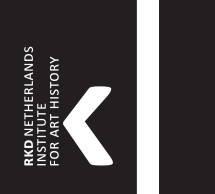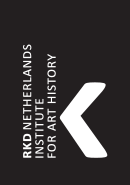2.3 Dutch Artists in Poland
There were more Northern than Southern Netherlanders in Poland in the 17th century, or at least so it appears from the factual information in the database RKDartists&, which gives 18 practitioners from the south as opposed to 34 from the north. The figures may have been reversed during the 16th century but for want of data in RKDartists, it is not possible to verify such suppositions via this route. Possibly more paintings from the Southern Netherlands came to Poland via export than by way of travelling artists who painted there. Of the mentioned 34 artists from the Northern Netherlands, only eight were not mentioned by Gerson. They include two glass painters, who have also been torn from oblivion by Pałubicki’s archival research: Hendrick Lampertssen from Franeker and Cornelius Kersten from Amsterdam.1 It was not yet known in Gerson’s time that the Amsterdam art dealer Hendrick Uylenburgh (c. 1587-1661), with whom Rembrandt stayed for four years and, lived in Poland until he was almost 40 years old.2 Nor was it known that Hendrick, brother ofRombout Uylenburgh, played such an important role in the import and export of paintings, drawings and prints between the Dutch Republic and Poland.3
A minor Dutch artist whom Gerson did not mention is the engraver Frans Allen (-after 1685) [1], who, so the Thieme/Becker informs us, was of Dutch origin and lived in Danzig for fully 40 years. But Gerson also made no index card for the important court architect Tilman van Gameren (1632-1706) [2], who worked in Poland from 1660 to his death, though he did mention other architects.
In a note to a publication of 1979, James Welu mentioned in passing that the Amsterdam still-life painter Jan Vonck (1631-c. 1663/64) was born in 1631 in Toruń and that this and other archival facts had been communicated to him by S.A.C. Dudok van Heel, who had found the evidence in the City Archives of Amsterdam [3].4 This news situates Elias Vonck (c. 1605-1652), Jan’s father, in Poland during the 1630s. A daughter of his was baptized in Amsterdam in 1639, meaning he was definitely back in his native city by then. This information was taken over without much ado in the art-historical literature after 1979. Gerson had already observed on the basis of visual evidence that some paintings by Daniel Schultz (c. 1615-1683) were somehow related to works by Elias (and/or Jan) Vonck,5 but the knowledge that Elias Vonck was active at a time that Schultz could already have been an apprentice, asks for closer comparison of their works.
A striking pictorial type that occurs in the oeuvre of both Elias Vonck [4-5] and Daniel Schultz [6-7] is the hunting still life with a figure (man, woman or child) who holds up a dead hare or bird. It is almost certain that Schultz was familiar with such works by Vonck, this being knowledge that he could also have come by during his stay in the Dutch Republic in the first half of the 1640s.6 Krzysztof Tretkowski or Tricius (1622-?) also came from Poland to Amsterdam to become apprenticed to Elias Vonck, presumably in 1641.7

1
Frans Allen after Adolf Boy
Portrait of Henrich Freder, c. 1652-1654
Amsterdam, Rijksprentenkabinet, inv./cat.nr. RP-P-1935-268

2
Tilman van Gameren
Selfportrait of Tilman van Gameren (1632-1702)
Warsaw, Printroom of the University Library in Warsaw, inv./cat.nr. AT 917 recto

3 Marriage registration of the painter Jan Vonck and Trijntje Jans, 6 December 1653 in the City Archive of Amsterdam (DTB 472, p. 195)

4
Elias Vonck
Boy with dog and game
Delft, Museum Prinsenhof Delft

5
Elias Vonck
A boy holding a hare near a hunting still life with dead birds, c. 1650
London (England), New York City, art dealer Jack Kilgore & Co.

6
attributed to Daniel Schultz
A man holding a hare, 1660's
Wrocław, Muzeum Narodowe we Wroclawiu

7
Daniel Schultz
Woman with a dead hare: Allegory of Autumn, dated 166[.]
Stockholm, Nationalmuseum, inv./cat.nr. NM 293
Notes
1 Pałubicki 2009, vol. 2, pp. 131 and 464.
2 Van der Veen 2001 and Lammertse/Van der Veen 2007.
3 Boers 2012, p. 56-61 and passim. On Rombout Uylenburgh, see Erik Löffler’s article below.
4 Welu 1979, p. 123, n. 2. The archival piece concerns the registration of the church marriage of Jan Vonck and Trijntje Jans: ‘Compareerden als vooren Joännes Fonc van Turen in-/ polen schilder out 22 jaer geen ouders hebbende woon[en]de in den Cle[?].straet ende Trijntje Jans van/ A[msterdam] out 22 jaer geass[isteer]d met Jan Jansen Crijpskerk [Grijpskerk?]/ haer vader woon[en]de op de Rosengraft […]’. Below are his signature, ‘J. Vonck’, and an ‘x’ for Trijntje.
5 See § 3.3: Daniel Schultz and Andreas Stech.
6 He was registered at the University of Leiden in 1643 (Steinborn 2004, p. 221).
7 Thieme/Becker1908-1953, vol. 33 (1939), p. 383. This volume of the lexicon had not yet come out when Gerson completed his research in 1938.

